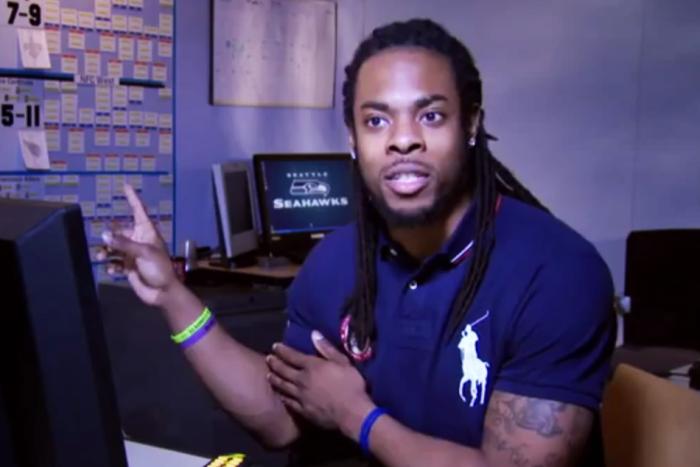After casting Linda Cardellini and Busy Phillips in Freaks and Geeks, Judd Apatow and Paul Feig are said to have had a conversation with the two of them about not doing the usual actress thing and trying to lose weight for the pilot. Though I’m sure you can already envision the ensuing Jezebel post in your mind, this was less in service of feminism than realism: the creators wanted everyone on the show to look like teenagers, which is to say not fully formed, lacking a certain deliberation. Their male lead, John Francis Daley, was actually the same age as his character (14), which gave him an awkwardness you really can’t teach; though Cardellini was almost double that, every other major character was either still a teenager or close enough to be in the hormone hangover, which showed in a way that, say, Dawson’s Creek could never match.
Almost 15 years later, Apatow is once again producing a show that uses its actors’ physicality as a synecdoche for its approach to realism: Girls. As with Jesus, a good chunk of the populace is forced to swallow some nonsense about Lena Dunham’s body pretty much every Sunday, so I don’t want to linger here, but it’s worth noting that her response to the whole “Why are you always naked?” flap appealed to naturalism: “It’s because it’s a realistic expression of what it’s like to be alive.” As is, by extension, having an OCD flare-up while trying to write an ebook, or taking a road trip to get a friend out of rehab. Or et cetera.
Realistic expressions of life are pretty funny things, though. Excusing certain really stylized aesthetics (and even they’re often after some kind of realism in sharp relief), expressing something real about life is the ostensible goal of so much art. But one era’s or genre’s realism can very quickly become another’s mannered dishonesty: where, say, Citizen Kane’s low-angle shots were meant to suggest the very real power of its William Randolph Hearst stand-in, by now they are the standard grammar of film, one of the ways we know we are watching something specifically not real.
Dunham is part of a tradition of American filmmakers for whom realism is a central concern. The oldest and most prominent ancestor is John Cassavetes, though Dunham herself is on the tail-end of what’s generally called mumblecore (a stupid term that began as a joke, though it’s strangely fitting for a movement that is about trying to obliterate the deliberateness of art): the common thread is that they found realism in a very directly un-mannered style. The subjects tend to be mildly aimless (and usually young, at least so far), and they’re usually depicted doing not much more than living; they are usually thoughtful and self-aware, although not at all articulate in the having-prepared-speeches sort of way we tend to associate with movies. If the tendency of dialogue is to always have people saying the perfect thing, mumblecore is about people always struggling to figure out exactly what they’re trying to say, often while they’re saying it.
It’s a powerful mode in the right hands, but it’s not without its limitations, which Dunham has seemed to realize over the course of Girls. Now in its third season, its setting and story structure are basically intact—the show is still about four girls living in a very specific corner of Brooklyn—but the actual characters of Girls have become more and more, well, character-y. Those characters are generally complex and well-drawn—except maybe Shoshanna—but they’re also pushing at the edges of just plain living. Dunham’s on-screen boyfriend Adam (Adam Driver) has always been kind of a weirdo, but Hannah’s second-season out-of-the-blue OCD plot struck me as part forcing a conflict on the character, and part not knowing how to maintain Hannah as a more domesticated kind of fuck-up—that sort-of clueless, mildly lazy, self-important but mostly well-intentioned edge-of-something person that most of us call “someone in their twenties.”
Which brings us back to Freaks and Geeks. Feig and Apatow’s concern with realism obviously paid off for that show: its place in the pantheon is secured, in part, because of its almost-too-painfully on-point depiction of high school. But it still indulged quite freely in the tropes of on-screen high school existence: there’s the episode where Lindsay crashes her parents’ car, and the one where she tries pot, and the one where she gets a fake ID. The geeks watch a porno, Sam gets towel-whipped in the locker room, Bill gets picked last for baseball, Neil finds out his dad is cheating on his mom. There is a just-slightly-too-open guidance counsellor, and a belligerent, perpetually angry father, and a mother who’s worried her life has gotten boring, never mind that the titular groups are just straight out of the high school handbook.
The thing is, for all its practiced set-ups, Freaks and Geeks still feels quite real to us because it’s so emotionally on point: if a lot of its scenarios are fictional staples, they’re also the kinds of things that happen to us in real life, and the show always made them turn out the way we kind of remember. Lindsay trying pot is neither horrific nor revelatory, just a little bit thrilling and a little bit scary and then a little bit boring, and there are chips and prog-rock. None of the moments ever seem epochal—they’re just a bit shameful or a bit pathetic or a bit fun, and will almost all seem melancholy or funny or sweet given enough time.
I don’t know that Girls really has those kinds of moments. It certainly has a knack for finding unique situations that are nevertheless fairly illuminating—and I doubt, like, the “cloistered two-day affair that lays bare your unstated dreams” episode is going to become a sitcom staple. In that way, rather than being another outlet for the old tropes, its realism comes instead from throwing us the kinds of unexpected moments that life often does—even if it doesn’t always have a handle on how we really act once we’re in them.






